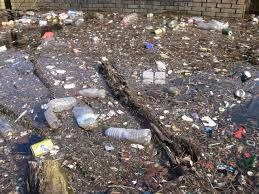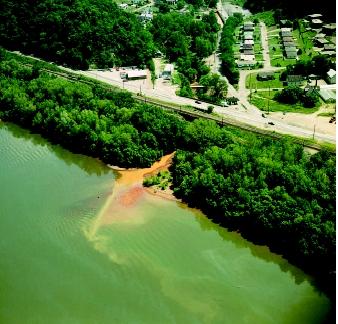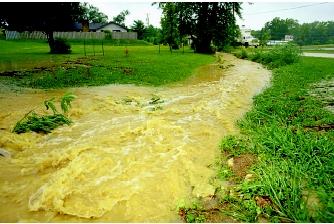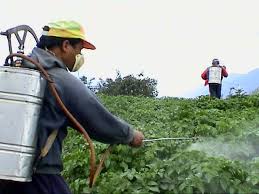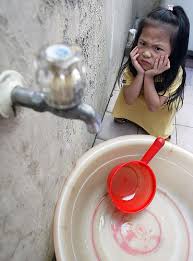
Water is essential to our lives today; if polluted by certain industrial, domestic, and agricultural sources, it will not function the same way as clean water. Water pollution is caused by human activities, and the different human sources add to the pollution of water. Industrial, domestic, and agricultural pollution have many effects on today’s world. For as much as we use water for, it needs to be clean water. Agricultural pollution comes from animals and pesticides on farms, which will eventually lead into our sources of clean water. Domestic waste is the pollution that comes from our homes. Industrial pollution comes from industrial sources such as factories, which their wastes can pollute clean water. The water we use, and make unclean is then spread into the clean water sources that we will later have to use. Without water, life on Earth would cease to exist, because everything on our planet needs to grow and prosper. The purpose of this second post is to expand the knowledge about where water pollution can come from and what are the different categories of the sources. Industrial, domestic, and agricultural pollution are equally at fault to the poor content of water today.

CLASSIFICATIONS
Agricultural waste is technically a non-point source of pollution because it is mostly runoff of nitrogen-based fertilizers from farms. These fertilizers lead into streams, rivers, lakes, bays, and oceans in the form of runoff. This can cause many problems, such as algal blooms, which can destroy an ecosystem. However, agricultural waste can also be considered a point source because farms that raise livestock produce a large amount of animal waste, which directly pollutes the environment.
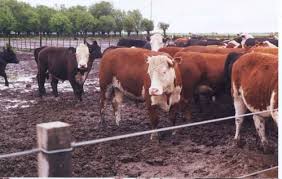


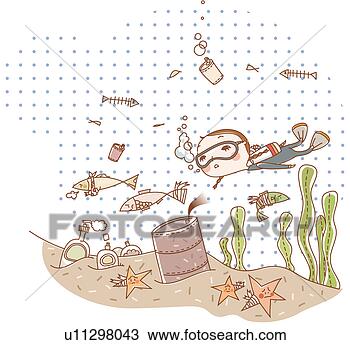
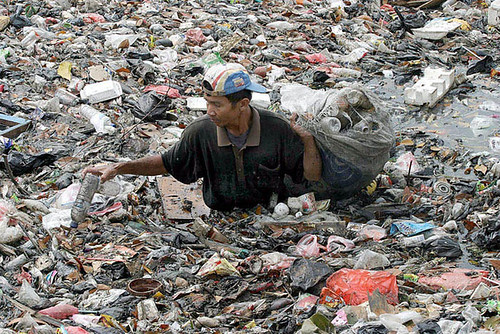




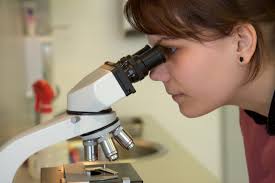


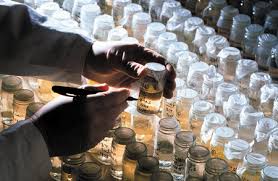

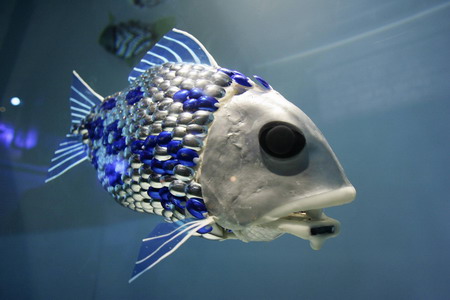



REPERCUSSIONS
Each type of pollution source had a different type of repercussions. In agricultural waste the repercussions originate from the animals as well as the pesticides from the crops. In agriculture, large tracts of land are typically plowed to grow crops. Plowing the land exposes and disturbs the soil, making it more vulnerable to erosion during rainstorms. Then this runoff carries unabsorbed fertilizers and pesticides away from the farm and into nearby waters. Runoff creates areas of dead zone, where oxygen is not abundant hence killing its organisms. The animal wastes also create a problem. Some farms will not treat the animal waste and it will flow into a body of water as raw sewage. This then puts large amount of nutrients in the water that can activate harmful algae blooms killing other organisms. It can also cause hypoxia, where decaying matter uses the oxygen in the water. In many towns and cities water from storm drains aren’t treated before emptying into nearby water bodies. So debris and waste flow into the storm drains, where this waste flows directly into a body of water.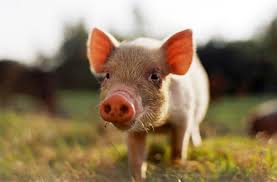
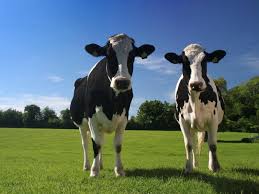

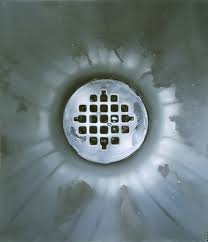


PROACTIVE MEASURES
There are many proactive measures of each source. In agricultural sources conservation tillage and crop nutrient management can be done as well as the use of beneficial insects. Conservation tillage leaves behind some plant matter to prevent erosion and will decay, producing nutrients. It also will usually keep most of the pesticides so less will need to be applied. Less use of pesticide can be beneficial, and organic organisms can come to eat these plant-eating critters.


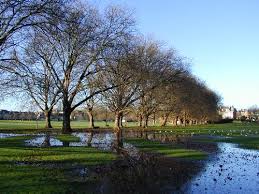
HEALTH RISKS
The manure from animals is agricultural waste.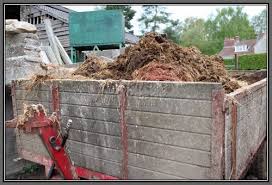


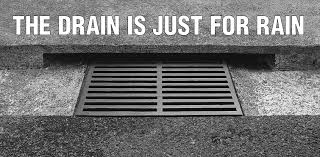
FACTORS, BELIEFS, CONSIDERATIONS ON SOCIETY HEALTH
When factories dump out dirty and toxic chemicals, the toxins spread in the water, while the pollution arises into the atmosphere. A gradual buildup will lead to the development of acid rain, which can be very dangerous and life threatening. There is a lot of debate over the public acceptance of the use of wastewater in the farming and water environments. Places such as North and South America, Africa, and Europe oppose the use of extra as a fertilizer. On the contrary, some countries accept the practice. Wastewater is used in parts of the world were water is not very accessible. For example, wastewater (once cleaned) is used for the irrigation of the crops in Islamic countries.

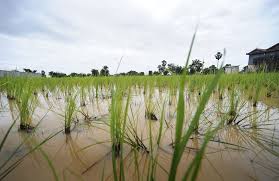
CONCLUSION
Overall, water pollution is very harmful whether it is industrial, domestic, or agricultural. All of these sources of water pollution can harm our environment, and need to be stopped in order to use the water for the future. Ordinary tap water may become deadly within minutes out of contamination due to the industrial spillage. Without water, this world will not survive. By listening to the proactive measures, you can make a difference in your community. Stop being part of the problem, but rather part of the solution! WORKS CITED
WORKS CITED
Natural Resources Defense Council. How to clean up our Water. Retrieved from:
http://www.nrdc.org/water/pollution/gsteps.asp
Pollution from Agriculture. Retrieved from:
http://www.naturegrid.org.uk/rivers/gt%20stour%20case%20study-pages/plln-frm.html
Sewage Treatment. Retrieved from:
Agricultural waste is technically a non-point source of pollution because it is mostly runoff of nitrogen-based fertilizers from farms. These fertilizers lead into streams, rivers, lakes, bays, and oceans in the form of runoff. This can cause many problems, such as algal blooms, which can destroy an ecosystem. However, agricultural waste can also be considered a point source because farms that raise livestock produce a large amount of animal waste, which directly pollutes the environment.



Domestic waste is classified as a point source of pollution, because the wastewater from homes and commercial establishments is often directly emitted into bodies of water. Domestic waste can vary from cleaning products, to household things used by regular people. These pollutants can pose a high risk on a large scale. When these domestic liter is mixed in with the clean environment, the pollution and our water can be combined into a very deadly mix.


Industrial waste is classified as a point source of pollution. The most common source of this type of pollution is from business factories. These factories usually will have waterways and tubes that transport their dirty waste material away to another place, usually emptied out at a nearby body of water. It is this that causes the area of marine organisms to suffer, and their habitat will be destroyed. Raw sewage from industrial processes are often emitted directly into bodies of water, along with the pollution from domestic wastewater. Factories will recklessly dump their industrial waste into pure water, which can turn the translucent and pure water into dirty and foul green water.




DETECTION, CAUSES AND EFFECTS METHODS
Water pollution is very major in our destruction of the planet. Hence, we must have many detection methods of preventing pollution. Water pollution can be detected in laboratories, where small samples of water are analyzed for different contaminants. Scientists test and examine the pollution sources in their labs.
Water pollution is very major in our destruction of the planet. Hence, we must have many detection methods of preventing pollution. Water pollution can be detected in laboratories, where small samples of water are analyzed for different contaminants. Scientists test and examine the pollution sources in their labs.

Methods like chemical and radioactive carbon testing have been used to detect pollution in waters. They conduct chemical analysis of rivers, lakes, and oceans on a regular basis. Sampling could be used with accuracy to detect changes and trends in the bodies of water, through their innovative technology. Once the water sample is taken, it is brought back to their labs where they can plug the data into their computers. The computers can determine if and how polluted the water is, and it can calculate a model that shows the possible relationships and impacts on the habitat, along with methods to prevent the problem. Laboratories use the computers to determine the dangers in the waters.

One natural way to detect pollution is using the organisms in the habitats! Many living organisms can be used for detecting water pollution. If pollution is heavily concentrated on one particular area, those organisms in that area will express signals and signs of unusual behavior. Changes in their behavior or growth can show scientists that the water they live in is polluted. Scientists have demonstrated that African clawed frog tadpoles "light up" when a pollutant is in existence, and can indicate the presence of several chemical species at the time. Specific properties of these organisms can give us information on the source and composition of pollution in their environment. These tadpoles have a green fluorescent protein in their bodies; when physiological stress is expressed because of the pollutants, the green light will show visibly. These tadpoles are very useful as environmental monitors because they can develop a complete immune system with complex body systems, such as a heart, and have circulatory systems. These are just like humans, but the animal matures in matters of days, not years. In this experiment, genetically codified tadpoles have been combined with a detection system to detect the presence of heavy metal pollution in river water. Many detection methods have been used for environmental monitoring, but they require a lot of money and time with labor.

In London 2005, scientists and technological engineers have made a robotic fish. This carp-shaped robot can mimic the movement of a real life fish, and the robotic fish has chemical sensors to sniff out dangerous pollutants, such as petroleum oil leaks from water vessels or chemicals from underwater pipelines. These fishes, costing $29,000 apiece, is about the size of a seal (5 feet long).

Scientists in Israel have discovered a new way to detect water pollution by "listening" to the plants in the waters. When they shine a laser beam on these tiny pieces of algae floating in the water and measure the rate of photosynthesis, they hear sound waves that tell them the type and amount of impurities in the water. By looking at the condition of the algae and the rate of photosynthesis, heat is shot back into the water, creating sound waves. Using a special underwater microphone, researchers are able to analyze the power of the sound waves. The strength of the sound can determine the health of the algae and the condition of its surrounding water.

Other than using scientific knowledge, you can base water pollution off your common sense. If the water is not clear, and there is garbage in and floating on the surface, then this is water pollution.

Causes of water pollution are hot water discharge from factories; cement, plastics, metals, and lubricants from construction byproducts; waste chemicals, disposed of medicine, fertilizers, and detergents from our homes; oil spills, and untreated sewage from boats.
Effects of water pollution are the death of marine organisms in rivers and oceans (this may be due to lack of oxygen, destruction of habitat, not enough food, lack of sunlight, etc.). When our waters are polluted, this can threaten our living. Many diseases will come with drinking unpure- water or swimming in toxic water. Such health problems may be blood disease, heart disease, nervous system disorders, diarrhea, skin lesions, and vomiting in humans.

REPERCUSSIONS
Each type of pollution source had a different type of repercussions. In agricultural waste the repercussions originate from the animals as well as the pesticides from the crops. In agriculture, large tracts of land are typically plowed to grow crops. Plowing the land exposes and disturbs the soil, making it more vulnerable to erosion during rainstorms. Then this runoff carries unabsorbed fertilizers and pesticides away from the farm and into nearby waters. Runoff creates areas of dead zone, where oxygen is not abundant hence killing its organisms. The animal wastes also create a problem. Some farms will not treat the animal waste and it will flow into a body of water as raw sewage. This then puts large amount of nutrients in the water that can activate harmful algae blooms killing other organisms. It can also cause hypoxia, where decaying matter uses the oxygen in the water. In many towns and cities water from storm drains aren’t treated before emptying into nearby water bodies. So debris and waste flow into the storm drains, where this waste flows directly into a body of water.


Industrial waste also has a great impact on the environment. Whether a discharged chemical is harmful to the aquatic environment depends on a number of factors, including the type of chemical, its concentration, the timing of its release, weather conditions, and the organisms living in the area. All of the sources, especially industrial, result in water pollution and unsafe drinking water, and can restrict activities like fishing and swimming, just as the other possibly can.


Domestic waste can harm our water drinking environment. The pollution can contaminate and make our waters dirty. The contaminants can then kill the organisms native there, and can turn the pure, clean water into an unpleasant, dirty and filthy unclear water.

You should never directly pour toxic chemicals down a drain, because it may end up in nearby bodies of waters. The chemical drug that you have just littered will be overdosed by the water's organisms, such as fishes. These animals now have the drug in their system. Such drugs like pain relievers, steroids, birth control pills, aspirin, and other medical drugs may be helpful to humans, but deadly to marine animals. Fish, plants, and other aquatic life are feeling the effects of pharmaceuticals in their environment. These drugs may cause the animals to suffer, may cause deformity, and hormonal and unnatural changes.

PROACTIVE MEASURES
There are many proactive measures of each source. In agricultural sources conservation tillage and crop nutrient management can be done as well as the use of beneficial insects. Conservation tillage leaves behind some plant matter to prevent erosion and will decay, producing nutrients. It also will usually keep most of the pesticides so less will need to be applied. Less use of pesticide can be beneficial, and organic organisms can come to eat these plant-eating critters.

For domestic wastes buffer strips and porous paving material can be used. If buffer strips in areas such as parking lots are made in construction will drastically reduce pollutants. These strips of grass, surrounded by pavement, absorb soil, fertilizers, pesticides, and other pollutants before they can reach storm drains or a body of water.

Using porous paving materials allow the water to pass through the pavement then into the ground, where the sediments filter out pollutants.
Industrial waste can also be reduced if grass and straw is laid in construction sites, trees are replanted after logging. Grass planting and laying of straw around construction sites help reduce runoff as well as erosion. When trees are replanted after deforestation, the new trees prevent erosion, limiting sediments in the water. Taking proactive measures beforehand can easily reduce the amount of pollution that is eventually caused.

HEALTH RISKS
The manure from animals is agricultural waste.

Although many people find manure to be harmless, it actually is quite toxic as it has to be moved from place to place. There are 335,000,000 tons of manure produced each year that contribute to the pollution of the world. Due to the manure that factories harbor for fertilizers, 400 gasses are released into the air. Some of the gasses include hydrogen sulfide, methane, ammonia, and carbon dioxide. These gasses can cause acid rain, eventually harming the human health.

These gasses harm human health due to the composition of the air, as well as how that leads to water. Acid rain, and eutrophication can alter human health a lot. Through this pollution, water borne diseases can be spread, eventually harming the entire population of an area. Also, pollution from animals has claimed the lives of farm workers. Manure pits have very high levels of chemicals, which can cause asphyxiation. Domestic Waste affects the soil, which can then affect the crops, therefore affecting human health. With too much added nitrogen and phosphorous is never good. As said before, moderation is necessary- even for nutrients.
PREVENTIVE MEASURES/ STRATEGIES
First, there are many methods and strategies to preventing water pollution. Some ways to prevent water pollution via agricultural waste are through legislature and specific plans. For example, in 1991 the Ministry of Environment, Food, and Rural Affairs (MEFRA) made a “Code of Good Agricultural Practice.” This document gives detailed advice on the treating, storing, and applying of annual waste disposal of dirty water, fertilizers, fuel oil, pesticides, nitrates, the disposal of animal carcasses, and other such wastes. Members have to produce a Farm Waste Management Plan according to the pollution regulation standards set by the “Code of Good Agricultural Practice.”
PREVENTIVE MEASURES/ STRATEGIES
First, there are many methods and strategies to preventing water pollution. Some ways to prevent water pollution via agricultural waste are through legislature and specific plans. For example, in 1991 the Ministry of Environment, Food, and Rural Affairs (MEFRA) made a “Code of Good Agricultural Practice.” This document gives detailed advice on the treating, storing, and applying of annual waste disposal of dirty water, fertilizers, fuel oil, pesticides, nitrates, the disposal of animal carcasses, and other such wastes. Members have to produce a Farm Waste Management Plan according to the pollution regulation standards set by the “Code of Good Agricultural Practice.”

Next, to prevent industrial pollution we use a system called the sewage treatment process. This process allows for effluents that are toxic to waters, to be safely decontaminated and recycled back into the environment. This process has two methods of treatment. The first or primary step is the simplest, however least efficient, method of treatment. It involves the settling out of solid suspensions in the water to become sludge. This removes only one third of the BOD and none of the dissolved minerals. The next method of treatment or secondary treatment is when the effluents come into contact with oxygen and microorganisms and they together break down organic matter into substances such as carbon dioxide. In addition to the sewage processes, the government has played a role in the prevention process. They have passed the Clean Water Act in 1972 that set standards for industrial and municipal sources of pollution. Lastly, people cause domestic wastewater pollution.
To prevent domestic wastewater pollution, the polluters must learn how to properly dispose of pollutants in their homes. They must learn how to dispose of hazardous household products, how to recycle, the conservation of water, the use of natural fertilizers, not to over water your lawns, and to maintain your septic systems. These are all ways that the common person could try to do everyday to reduce the effects of domestic water pollution.
FACTORS, BELIEFS, CONSIDERATIONS ON SOCIETY HEALTH
When factories dump out dirty and toxic chemicals, the toxins spread in the water, while the pollution arises into the atmosphere. A gradual buildup will lead to the development of acid rain, which can be very dangerous and life threatening. There is a lot of debate over the public acceptance of the use of wastewater in the farming and water environments. Places such as North and South America, Africa, and Europe oppose the use of extra as a fertilizer. On the contrary, some countries accept the practice. Wastewater is used in parts of the world were water is not very accessible. For example, wastewater (once cleaned) is used for the irrigation of the crops in Islamic countries.


This means that economical need is more favorable than cultural preference. Some impure water is purified by methods of self-purification, adding pure water to dilute the impurities, or removing the impurities by time and physical effects. Many refuse or accept the practice of wastewater reuse. Some cultures refuse to reuse wastewater.

CONCLUSION
Overall, water pollution is very harmful whether it is industrial, domestic, or agricultural. All of these sources of water pollution can harm our environment, and need to be stopped in order to use the water for the future. Ordinary tap water may become deadly within minutes out of contamination due to the industrial spillage. Without water, this world will not survive. By listening to the proactive measures, you can make a difference in your community. Stop being part of the problem, but rather part of the solution!

Biggs et al. (2007). Biology. Columbus, Ohio: McGraw-Hill.
Bourgeois, Jeremie (Artist). [Earth Droplet]. Retrieved March 20, 2010, from: http://www.umich.edu/~gs265/society/waterpollution.htm
Diagram of Nonpoint Pollution [Diagram]. Retrieved March 22, 2010, from: http://students.umf.maine.edu/mcgrawbr/public.www/index5.html
Diagram of Nonpoint Pollution [Diagram]. Retrieved March 22, 2010, from: http://students.umf.maine.edu/mcgrawbr/public.www/index5.html
Harmful Algae. (2008. May 7), Retrieved March 21, 2010, from Harmful Algae. Website: http://www.whoi.edu/redtide/
Helmer, R. . (1997). Water pollution control. Suffolk: St. Edmundsbury Press.
Krantz, D., & Kifferstein, B. Water Pollution and Society. Retrieved from: http://www.umich.edu/~gs265/society/waterpollution.htm
Natural Resources Defense Council. How to clean up our Water. Retrieved from:
http://www.nrdc.org/water/pollution/gsteps.asp
Non point source pollution: Categories of Pollution Non Point Source. (2008, March 25). Retrieved from http://oceanservice.noaa.gov/education/kits/pollution/04nonpointsourc
es.html
Non point source pollution: Categories of Pollution: Point Source. (2008, March 25). Retrieved from http://oceanservice.noaa.gov/education/kits/pollution/03pointsource.html
Non point source pollution: Research, Monitoring, and Assessment. (2008, March 25). Retrieved from http://oceanservice.noaa.gov/education/kits/pollution/014research.html
es.html
Non point source pollution: Categories of Pollution: Point Source. (2008, March 25). Retrieved from http://oceanservice.noaa.gov/education/kits/pollution/03pointsource.html
Non point source pollution: Research, Monitoring, and Assessment. (2008, March 25). Retrieved from http://oceanservice.noaa.gov/education/kits/pollution/014research.html
Point-Solution Pipe [Picture]. Retrieved March 17, 2010, From: http://www.waterencyclopedia.com/images/wsci_03_img0431.jpg
Pollution from Agriculture. Retrieved from:
http://www.naturegrid.org.uk/rivers/gt%20stour%20case%20study-pages/plln-frm.html
http://users.rcn.com/jkimball.ma.ultranet/BiologyPages/S/SewageTreatment.html
The Issues-Water Pollution. (n.d.). Sustainable Table. Retrieved March 10, 2016,fromwww.sustainabletable.org/issues/waterpollution/
Thurman, Gerald D. (Photographer). Don't Litter Sign [Photograph]. Retrieved March 15, 2010, from: http://www.azlitter.org/20050401/images/01_DontLitterSign.jpg
Water Contamination [Photograph]. (2009). Retrieved March 19, 2010, from: http://www.paranormalknowledge.com/articles/wp-content/uploads/2008/12/waterpollution.jpg
Water pollution solution. (n.d.). Retrieved from http://www.greenbelt.org/downloads/resources/curriculum/chapter4.pdf
Winter-hart, Nicole (Photographer). Nepalese Child in Dirty Water [Picture]. Revived March 20, 2010, from: http://www.pledgingforchange.com/profiles/profile/show?id=Nicolewinterhart



